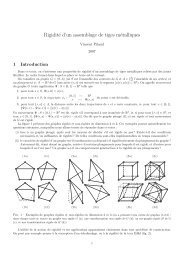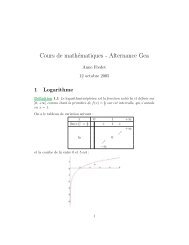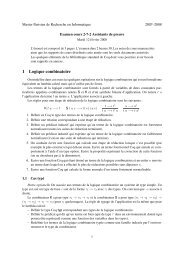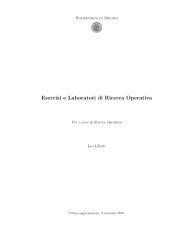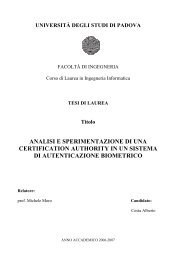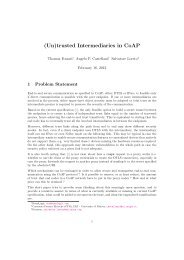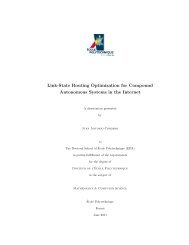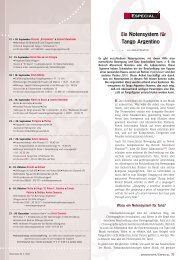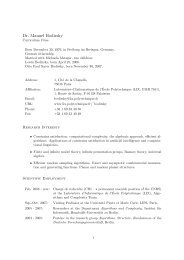Create successful ePaper yourself
Turn your PDF publications into a flip-book with our unique Google optimized e-Paper software.
8 FOLLOWING AND LEADING 14<br />
8 Following and Leading<br />
One of the goals in the design of the notation was that the notation <strong>for</strong> the<br />
following partner can often be deduced from the notation <strong>for</strong> the leading partner.<br />
As already mentioned, this is <strong>for</strong> example not possible in Castro’s system. It is<br />
not obvious, whether the presented notation achieves this goal.<br />
In this section we demonstrate how the notation of her next movement and<br />
state can often be deduced from the notation of her previous movement and<br />
state, and from the notation of his previous state and his next movement and<br />
state. We will explain how to locally deduce the notation <strong>for</strong> the following<br />
person in several steps. Consider the diagrams in Figure 9, which first show<br />
the first non-trivial situation in the backward ocho and the right rotation in<br />
<strong>Notation</strong>s 5 and 7, respectively. We would like to find out the symbols that<br />
could replace the question marks. We proceed as follows:<br />
1. Using the in<strong>for</strong>mation of the orientation and impulse of the upper bodies,<br />
and the relative positions of the legs, we deduce the relative positions of<br />
centers of the partners.<br />
2. With the in<strong>for</strong>mation about his leg movement, and the in<strong>for</strong>mation whether<br />
the weight changes between his movement, we can figure out the new position<br />
of his center.<br />
3. The in<strong>for</strong>mation about the new position of his center, and the in<strong>for</strong>mation<br />
about the new relative orientation of his upper body determine whether<br />
her center, and consequently her legs have to move to some direction.<br />
4. Her new relative position, and the in<strong>for</strong>mation about the new orientation<br />
and impulse of his upper body determine the new orientation of her upper<br />
body.<br />
5. If indicated by him (check <strong>for</strong> the symbol •), she changes the leg carrying<br />
her weight in the new position.<br />
If we apply this procedure to Figure 9, we obtain the symbols as they were<br />
shown in <strong>Notation</strong> 5 and <strong>Notation</strong> 7 be<strong>for</strong>e.<br />
· •<br />
⌊ o<br />
o<br />
| · ⌊ o<br />
o<br />
/ (9)<br />
/ ?? ·<br />
x<br />
x<br />
/ ??<br />
9 A Part of a Choreography<br />
This section contains the scores <strong>for</strong> approximately the first 30 seconds of a<br />
choreography of Juan Carlos Copes; he dances the choreography in a film called



